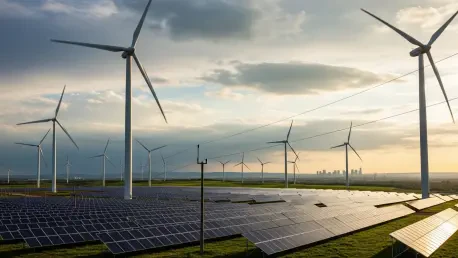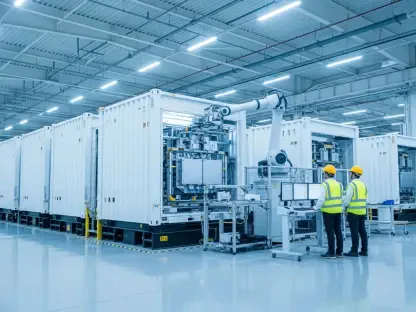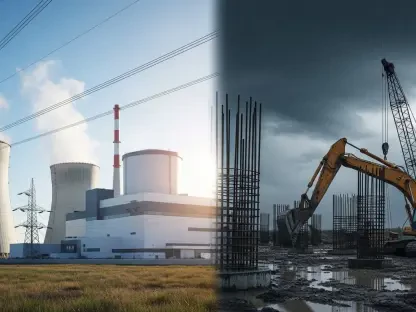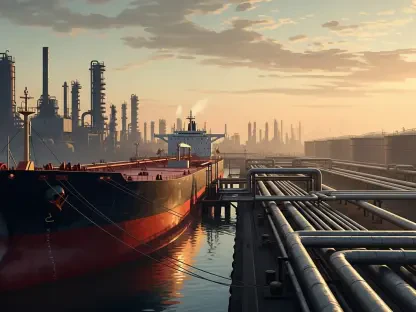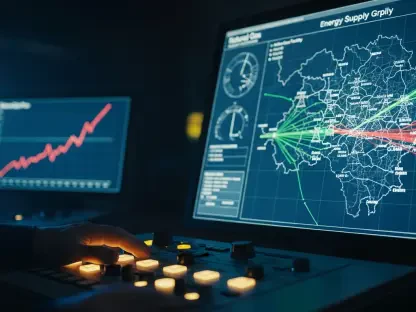Germany, as Europe’s largest economy, has witnessed a notable uptick in energy consumption, with a 2.3% increase recorded in the first half of this year, reaching 187.3 million tonnes of coal equivalent compared to 183.1 million tonnes in the same period last year. This surge raises critical questions about the balance between meeting immediate energy demands and pursuing long-term sustainability goals. Amid cooler weather patterns and a modest economic recovery, this shift underscores the complex dynamics at play in the nation’s energy sector. The following report delves into the driving forces behind this rise, the sectoral impacts, and the broader implications for policy and environmental objectives.
Overview of Germany’s Energy Sector in 2025
As the powerhouse of Europe, Germany’s energy landscape remains a cornerstone of its industrial and economic might. The sector encompasses a diverse mix of sources, including natural gas, coal, renewables, and heating oil, each playing a pivotal role in meeting the nation’s needs. Major market players, alongside technological advancements like the rapid expansion of photovoltaic systems, continue to shape the industry’s trajectory, reflecting a gradual shift toward cleaner energy alternatives.
Beyond internal developments, external factors such as weather conditions and economic performance significantly influence energy demand. Cooler temperatures in early 2025 have driven up the need for heating fuels, while a stabilizing economy has spurred industrial activity, further impacting consumption patterns. This intricate interplay of elements highlights the challenges of maintaining stability in a sector critical to national progress.
The significance of these dynamics cannot be overstated, as Germany’s energy choices resonate across the European Union. With renewable energy gaining ground yet fossil fuels still holding substantial sway, the nation stands at a crossroads, navigating between immediate energy security and the pressing need for environmental stewardship.
Key Drivers Behind the 2.3% Energy Consumption Increase
Impact of Weather and Economic Recovery
The primary catalyst for the increased energy use in the first half of this year has been the cooler weather sweeping across Germany. Lower temperatures have led to a heightened demand for heating, evidenced by a 4.7% rise in natural gas consumption and a striking 18% surge in light heating oil usage. These figures reflect how seasonal variations can significantly alter energy needs, particularly in residential and commercial sectors.
Additionally, a modest economic recovery has contributed to this upward trend. As industries regain footing after previous downturns, energy-intensive sectors have ramped up operations, pushing overall consumption higher. This economic uptick, though moderate, signals a return to growth that inevitably places greater pressure on energy resources.
Together, these factors paint a picture of a nation grappling with external pressures that dictate short-term energy requirements. While weather remains an unpredictable variable, the economic rebound offers a glimpse of resilience, albeit one that must be carefully managed to avoid over-reliance on traditional fuels.
Sector-Specific Trends and Data
Drilling down into specific sectors reveals a varied landscape of energy usage shifts. Coal consumption in power plants soared by 23%, a direct response to diminished wind and hydroelectric output caused by unfavorable weather conditions. This reliance on coal underscores the vulnerabilities in renewable energy supply during periods of low natural resource availability.
In contrast, the steel industry experienced a 12% decline in hard coal use, tied to reduced pig iron production amid economic challenges specific to the sector. Meanwhile, photovoltaic generation emerged as a bright spot, with a 25% increase, signaling robust growth in renewable energy adoption despite setbacks in other areas. These contrasting trends highlight the uneven progress across different industries.
Comparative data further illustrates the scale of change, with total energy consumption climbing from 183.1 million tonnes of coal equivalent in the first half of last year to 187.3 million tonnes this year. This rise stands in stark contrast to a full-year decline of 1.1% in 2024, emphasizing how short-term fluctuations can diverge from longer-term patterns and the need for adaptive strategies.
Challenges in Balancing Energy Demand and Sustainability
The environmental ramifications of heightened energy use are a pressing concern, with CO₂ emissions from thermal power plants rising by 2.6% in the first half of this year. This increase casts a shadow over Germany’s commitment to reducing greenhouse gas output, raising alarms about the compatibility of current consumption trends with national climate targets.
Striking a balance between meeting immediate energy needs and adhering to sustainability goals presents a formidable challenge. The reliance on coal to compensate for renewable shortfalls exemplifies the tension between short-term solutions and long-term environmental aspirations, a dilemma that requires nuanced approaches to resolve.
Sector-specific economic pressures add another layer of complexity, particularly in industries like steel, where reduced production has curbed energy use but also signals underlying financial strains. These dynamics illustrate how economic health and energy consumption are intertwined, often forcing difficult trade-offs between growth and ecological responsibility.
Policy Decisions and Market Implications
In June of this year, a policy to reduce electricity taxes for the energy, retail, and industry sectors was introduced, aiming to alleviate financial burdens on key economic players. This measure seeks to support recovery efforts by lowering operational costs, yet its scope and effectiveness remain subjects of debate among industry observers.
Criticism from stakeholders points to potential market distortions caused by selective tax relief, with concerns that it may unfairly favor certain sectors over others. Furthermore, the limited scale of the policy’s impact has led to questions about whether it adequately addresses the broader challenges facing the energy landscape, prompting calls for more comprehensive solutions.
These policy decisions reflect the intricate task of aligning economic recovery with sustainable energy strategies. As Germany navigates this terrain, the interplay between fiscal measures and market responses will be critical in determining whether such interventions can foster both growth and environmental progress without unintended consequences.
Future Outlook for Germany’s Energy Sector
Looking ahead, energy consumption trends in Germany are likely to remain influenced by a mix of seasonal fluctuations, economic variables, and weather conditions. Projections suggest that while short-term spikes may persist due to external factors, a gradual stabilization could emerge if economic growth continues at a steady pace over the next few years, from 2025 to 2027.
The promising growth of renewables, particularly photovoltaic power, offers a potential counterbalance to reliance on fossil fuels. Continued investment in solar infrastructure and related technologies could accelerate this transition, providing a buffer against the volatility of traditional energy sources and supporting broader climate objectives.
Emerging challenges, such as global economic uncertainties and the need for robust environmental policies, will test the sector’s resilience. However, opportunities also abound, with technological innovation poised to drive efficiency and sustainability, provided that supportive frameworks and international cooperation keep pace with these advancements.
Conclusion: Navigating a Complex Energy Landscape
Reflecting on the findings, the 2.3% rise in Germany’s energy consumption during the first half of 2025 underscores the significant impact of colder weather and a subtle economic upturn. Sectoral shifts, including increased reliance on coal for power generation and a remarkable surge in photovoltaic output, paint a picture of both progress and persistent challenges. Rising CO₂ emissions and controversial policy measures like electricity tax reductions further complicate the narrative, highlighting the intricate balance between energy demands and environmental priorities.
Moving forward, actionable steps emerge as critical for addressing these issues. Prioritizing investments in renewable technologies, particularly solar and wind, could mitigate reliance on fossil fuels during periods of high demand. Additionally, crafting more inclusive and impactful policies to support all sectors, rather than select industries, might foster a more equitable recovery. As Germany charts its path, focusing on international collaboration to share best practices in sustainable energy offers a promising avenue to tackle global challenges collectively, ensuring that short-term needs do not overshadow long-term ecological goals.
